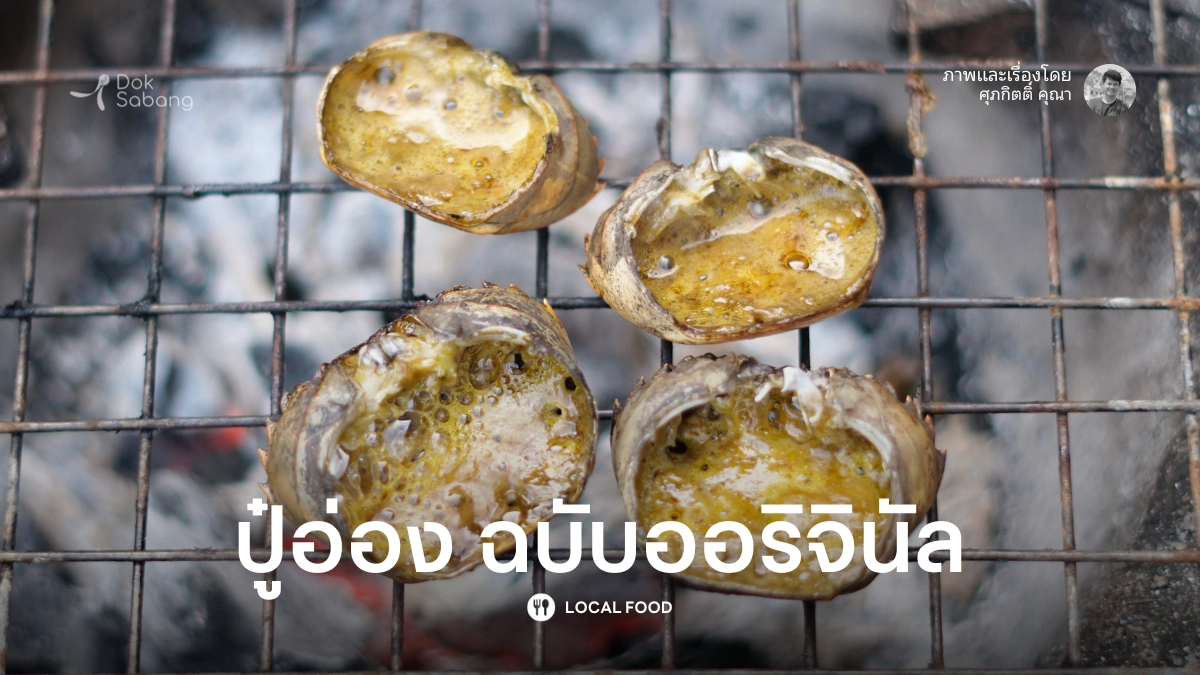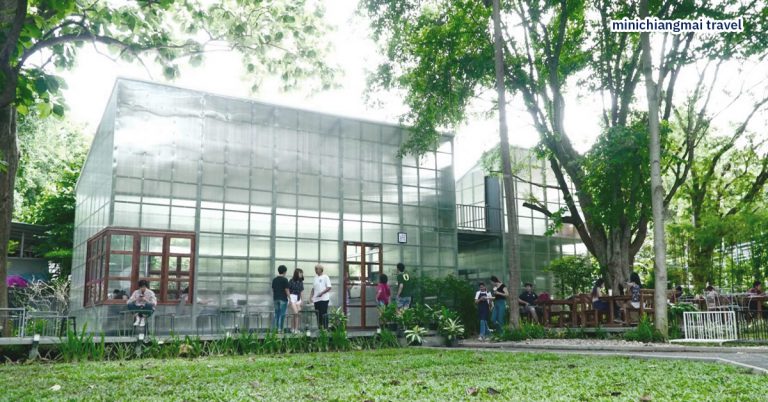
พาไปชิมปู๋อ่องของกิ๋นเมืองเหนือ ฉบับออริจินัล(ต้นตำหรับ)
ที่บ้านสันป่าตองเจียงใหม่
ขึ้นเหนือปิ๊กบ้านมาที่สันป่าตอง ด้วยความที่วิถีชีวิตคุ้นเคยกับโต้งนาตั้งแต่เด็ก ไม่พลาดที่จะลิ้มลองเมนูอาหารพื้นบ้าน หนึ่งในนั้นคือ #ปูอ่อง ซึ่งเป็นการเอาปูนาจากทุ่งนา มาทำอาหาร เมื่อสมัยก่อนนั้นที่สันป่าตอง เป็นเมืองเกษตรกรรม มีการทำนาปลูกข้าว เมนูนี้จะหากินไม่ยากนัก
ปูอ่อง (Crab Paste) เป็นอาหารพื้นบ้านของชาวล้านนา ว่ากันว่าปูอ่อง จะอร่อยที่สุดช่วงฤดูเกี่ยวข้าว เนื่องจากปูมีมันมาก ทำให้ได้มันปูมาทำปูอ่อง วิธีการทำปูอ่องคือการนำเอามันของ #ปูนา มาผสมรวมกับเครื่องปรุงรส สูตรต้นฉบับจริงๆจะไม่ใส่อะไรเลยนอกจากมันปูเพียงอย่างเดียว ทำการล้างกระดองปูให้สะอาด แล้วนำมันปูไปหยอดในกระดองปู จากนั้นก็นำไปย่างไฟอ่อนๆให้สุก ถ้าไฟแรงจะทำให้กระดองไหม้ บางคนก็ใส่ต้นหอมซอยลงไป จะทำให้ปูอ่องมีกลิ่นหอม น่ารับประทานยิ่งขึ้น แล้วก็ต้องทานตอนสุกร้อนคู่กับข้าวเหนียวร้อนๆ แต่ถ้าเป็นออริจินัลจริงๆ เมื่อนำไปย่างไฟพอสุก มันจะแห้งติดกระดองปู ข้าวเหนียวจิ้มสามคำก็หมดแล้ว ทำให้วิธีการกินปูอ่องของแต่ละคนนั้น มีวิธีในการกินที่แตกต่างกันไป บางคนก็ข้าวเหนียวคำโตๆ จิ้มนิดเดียว ส่วนผมนั้น ข้าวเหนียวจิ้มได้ 3-4 คำก็หมดแล้ว
ปัจจุบัน ปูอ่อง ฉบับออริจินัล หากินค่อนข้างยาก ด้วยปัจจัยหลายๆอย่าง โดยเฉพาะพื้นที่ทำนาลดน้อยลง ทำให้ประชากรปูก็ลดลงตามไปด้วย การจับปูมาทำอาหารก็หายากขึ้น แต่ก็มีเกษตรกรหลายคน ได้ศึกษานำมาเพาะเลี้ยงในบ่อ เพื่อจำหน่าย รวมถึงนำไปแปรรูปต่างๆ
ปูอ่องหลายสูตรก็นำไข่ไก่ผสมลงไปเพื่อให้ได้ปริมามากขึ้นมีขายตามออนไลน์หรือตลาดทั่วไปเก็บรักษาได้นานขึ้นก็แล้วแต่คนละชอบแต่อย่างไรก็ตามปูอ่องฉบับออริจินัลที่สันป่าตองนั้นถ้าจิ้มกับข้าวเหนียวร้อนๆนั้นบอกเลยว่ามันฟินขนาดเลยครับขออภัยที่ไม่สามารถอธิบายรสชาติได้อธิบายไม่ถูกครับแหะๆ
A Trip to Taste Original Pu-Ong, a Northern Thai Cuisine
By Supakit Kuna
I recently returned to my hometown, San Pa Tong in Chiang Mai, and couldn’t miss the chance to indulge in the local cuisine. One of my favorites is Pu-Ong, a dish made with rice field crabs.
In the past, San Pa Tong was an agricultural town with rice fields everywhere, making it easy to find Pu-ong.
Pu-ong is a traditional dish of the Lanna people. It is said to be most delicious during the rice harvest season when the crabs are fat and filled with crab roe.
To make pu-ong, the rice field crab roe is mixed with seasonings. The original recipe uses only crab roe, but some people also add chopped green onions for extra flavor. The mixture is then poured into cleaned crab shells and grilled over low heat until cooked. If the heat is too high, the shells will burn.
Pu-ong is best enjoyed hot with sticky rice. The original version is so thick and sticky that it clings to the crab shell. Just a few bites of sticky rice are enough to fill you up.
Unfortunately, it is becoming increasingly difficult to find original pu-ong. Several factors contribute to this, including the decline in rice fields, which has led to a decrease in the crab population. However, some farmers have started raising crabs in ponds for sale and processing.
Many pu-ong recipes also add eggs to increase the volume. These versions are available online and in markets, and they can be stored for longer periods.
No matter which recipe you prefer, original pu-ong from San Pa Tong is truly delicious when eaten with sticky rice. I can’t describe the taste precisely, but it’s definitely worth trying.
